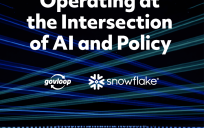Science often surprises. So when you learn that higher rates of ice cream consumption are highly correlated with more incidents of drowning, that might come across as a stunning – and possibly troubling – finding.
Believe it or not, it’s true on a large scale. When more ice cream is consumed, more drownings occur.
So what does that mean for government? Should we ban or regulate ice cream consumption?
Well, no. All that a high correlation means is that as more of variable X happens, more of variable Y does too. It doesn’t necessarily imply that the two are directly linked or have any sort of causality.
And in the case of the two previously mentioned variables, despite a sky-high correlation, ice cream consumption has very little, if anything, to do with cases of drowning. Instead, both have a common denominator or, in scientific terms, a confounding variable: summer. People mainly swim in the summer, and people mainly eat ice cream in the summer.
Whether this is an aha! revelation or an answer you had already guessed, the point of this exercise is that human logic and experience teased out the answer. And even when working with analytics and intelligent machines, logic will always win the day.
“The human needs still to make the decision, and the human needs to make the eye test,” said Edward Dowgiallo, Architect at the Transportation Department’s Office of the Chief Information Officer and Federal Transit Administration’s Office of Information Technology. Dowgiallo was one of three speakers during GovLoop’s recent online training session, “How Data Optimization Lays the Groundwork for AI,” hosted as part of Wednesday’s virtual summit.
More than ever, artificial intelligence (AI), which refers to computer programs that simulate human intelligence, will be scanning through data sets and finding anomalies, trends and correlations. Government offices are looking to widely incorporate AI, as advocated for by the White House, and therefore, they need the right frameworks in place.
AI bases its actions on data, building out models and processing large data sets. So for successful AI, agencies need to make sure data is available, standardized and clean and that the right governance models are in place.
“Our data tells a story, and the gaps in our data also tell a story,” said Neil Chaudhry, Director of Regulatory Audit Systems and Innovation in the Office of Trade for U.S. Customs and Border Protection. “So what we look at … is where our data is in its maturity.”
Agencies hold a surfeit of data for records and compliance purposes, but they often don’t know what to do with all of it. Government data has often been considered a security liability, but it’s also an opportunity for agencies to unlock insights.
Chaudhry said that his office deals with $2.6 trillion worth of imports, 35 million declarations and petabytes of data. With so much on the line, they’re looking to AI in different forms to analyze all of this information for descriptive and prescriptive purposes – to shed light on the current state of operations and help blaze a more efficient, functional path forward.
“Our AI/machine learning journey is all about augmenting the current work that our subject matter experts are doing in the area,” Chaudhry said.
Employees need the skills and abilities to work off of AI. Chaudhry said that his leadership considers everybody a data scientist, and they want to give them the tools to make decisions with support from AI. Dowgiallo, in the Transportation Department, said that he wanted to see more data clearly attached to lines of business.
Deploying AI is one way that organizations are putting data in the spotlight and making it accessible, actionable and central. With AI systems analyzing large backloads of data, organizations can discover the value of “dark data” and sources that they otherwise couldn’t get to. Then, human employees can make the final decisions, based off data.
“The key is to make sure the right pieces of data are being collected in a centralized manner so they can be acted on holistically,” David Arnette, Technical Marketing Engineer for NetApp, said.
Powered by clean, deep and standardized data, AI can identify potential savings for Customs and Border Protection, benchmark safety standards for the Transportation Department and answer questions of security, anomalies and grants.
Having data standards and governance models in place will be key to verifying the accuracy of these findings.
“There needs to be some sort of explainability to that decision, and that has to be stored and captured somewhere,” Dowgiallo said.
Just as correlations aren’t causations, don’t expect AI to run rogue any time soon with the right checks in place. Although AI might inform decisions, human logic will have the final say.
In other words, the Food and Drug Administration won’t be taking ice cream off the shelves because of a correlation.
This online training was brought to you by:






Leave a Reply
You must be logged in to post a comment.